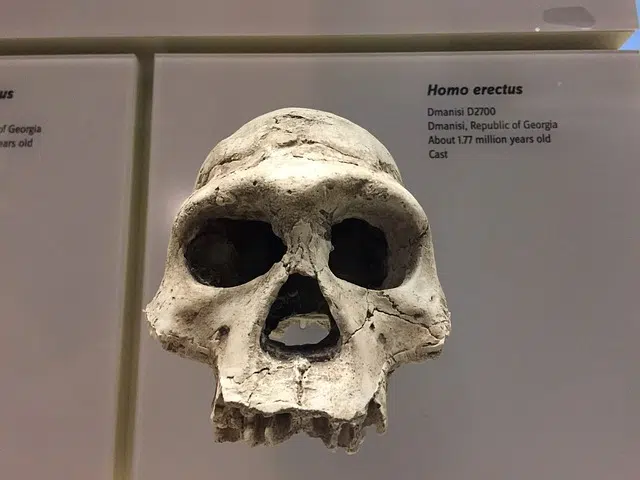
Homo erectus lived between 1.8 million and 300,000 years ago.
Human beings , like their closest ancestors, are part of the genus of hominid primates known as Homo . This genus , from the hominini tribe, emerged about 2.4 million years ago.
It is possible to recognize, within this genus, various extinct species. One of them is Homo erectus , who lived between 1.8 million and 300,000 years before the present, in the Early and Middle Pleistocene epoch ( Cenozoic era).
Homo erectus fossils were found in the East Asian region, in countries such as China and Indonesia . Other similar fossils were found in Africa and Europe , although scientists finally decided to include them in other species.
Characteristics of Homo erectus
Homo erectus was robust and could measure up to 1.80 meters . It had a strong jaw although without a chin, small teeth and a cranial volume that grew throughout the history of the species until reaching 1,200 cubic centimeters .
It is believed that Homo erectus already mastered fire . This species also had the ability to develop tools such as hammers, knives, anvils and diggers, made from stones and bones.

It is estimated that Homo erectus already mastered fire.
Ancestors and subspecies
Scientists are still debating whether Homo erectus is a direct ancestor of Homo sapiens (modern humans). It is even believed that the last populations of Homo erectus coexisted with populations of Homo sapiens .
On the other hand, it is possible to recognize various subspecies within Homo erectus, such as Homo erectus pekinensis ("Peking Man"), Homo erectus erectus ("Java Man") and Homo erectus soloensis ("Solo Man"). .
The importance of Homo erectus
One of the main characteristics of Homo erectus was its skill in making weapons and tools , in addition to the fact that it walked with its body upright and that both the volume of its brain, its height and its average weight place them very close to of our species from a physiological point of view.
Homo habilis stood out for beginning to combine and modify elements of its environment to create its own tools, but Homo erectus went much further than its supposed ancestor: its weapons became so lethal that they made it the first species of ours. family capable of hunting animals the size of the mammoth.
On the other hand, Homo erectus was the first to transcend the confines of southeastern Africa, unlike its ancestors. It was able to considerably expand its settlement area, until it occupied the rest of the black continent and reached Asia, Europe and Insulindia (the old name by which the archipelago located between Australia and the Malay Peninsula was known). In fact, the first remains of Homo erectus were found on the Indonesian island of Java.
Evolution and development
During the evolution of Homo erectus, the Earth was in a glacial period, and the cold inspired this species to create stone walls to protect themselves from the wind or constructions similar to current tents, using the skins of other animals . In the same way, Homo erectus did not hesitate to take advantage of the protection that caves could offer.
Without a doubt, the discovery of fire or, rather, having learned to master it, is what places Homo erectus in such a respected position by students of our evolution . As expected, there is no exact data about how this fascinating process of approaching the fire took place, but it is estimated that it began by keeping a naturally caused flame alive, perhaps by lightning, to later find a method to provoke one at any time.
